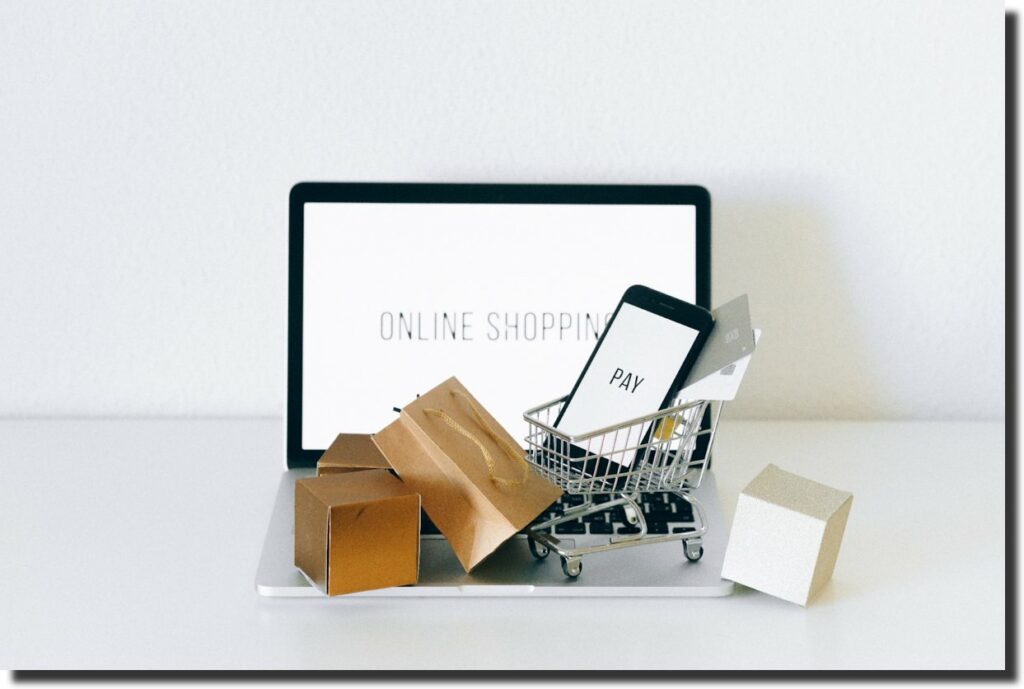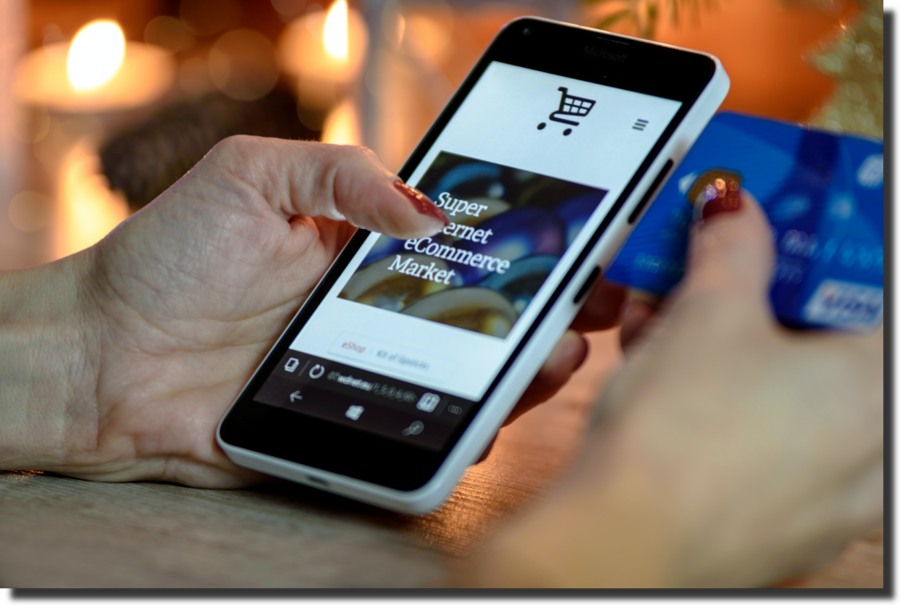The resources you need to launch an online business are more readily available than ever, and so are the potential customers. According to data, e-commerce sales in the United States are predicted to exceed $740 billion by 2023.
There is tremendous potential to launch your ecommerce website and establish a distinct market niche.
But there are several difficulties associated with that possibility. When first learning how to launch an e-commerce business, there is a lot to do. Taking the initial step can seem overwhelming, but it doesn’t have to be.
Work out the fundamentals of your e-commerce business plan first, such as what you’ll sell online and how you’ll sell it. Make a plan for how you want to approach the world of e-commerce and decide what factors are important to your success. Research and monitor your e-commerce competition to know their pricing and the trends in the industry.
You can quickly establish your brand and launch your e-commerce business with a solid strategy and some effective tools.
In this article, we’ll discuss how to start eCommerce business. So let’s start!
What Is an eCommerce Website?
E-commerce websites are online marketplaces that enable the exchange of products and services over the Internet by transferring data and money. E-commerce was initially conducted in part over the phone and through emails.
Everything a transaction requires may be completed online using only one webpage.
Ecommerce Business Types
Based on their purpose, several eCommerce websites have different names or labels.
- Business-to-Business (B2B) transactions include organizations exchanging products and services electronically. As an example, a company offers SAS products to other companies.
- Business to Consumer (B2C): Electronic transactions involving the exchange of products and services between businesses and customers, like purchasing a new t-shirt from an online retailer.
- Consumer-to-Consumer (C2C): Electronic transactions between consumers of goods and services, frequently facilitated by a third party. Example: You offer your old smartphone to a buyer on eBay or Olx.
- Consumer-to-Business (C2B) transactions: Online exchanges of goods and services between consumers and businesses. An example would be a social media influencer that charges a fee to promote their online audience.
What Is an Ecommerce Business
The term “ecommerce” refers to businesses and individuals that purchase and resell goods and services online. E-commerce can be done on computers, tablets, cellphones, and other smart devices and operates in various market categories.
E-commerce transactions make almost every good or service imaginable accessible, including publications, music, airline tickets, and financial services like stock trading and online banking.

Ecommerce Small Business
Small businesses matter a lot.
We have firsthand experience creating an online store that can change and grow your business.
Ecommerce offers a means to boost sales, increase visibility on the web, and fulfill growth goals in a way that does all you need, making it a sure way for small businesses to stand out, especially in such a crowded industry.

Of course, not every small business will benefit from using the same platform. In the end, it comes down to having a clear understanding of your unique business requirements and selecting the approach that best fits them.
You’re guaranteed to succeed by selecting a solid platform that suits both present and future needs and concentrating on the most important elements for success.
How Do I Start an Ecommerce Business?
Here’s how to start an ecommerce business:
1. Select a Niche
You must identify the ideal niche to launch a profitable online business. What specialty do you have? And what talent or knowledge would be in demand? What market niche do those skills fit? What kinds of goods are you looking to sell?
Start by conducting market research to determine the type of business you’ll be running. See what other companies in your industry are doing right or wrong by looking at them. When examining an example of an especially successful e-commerce company in your sector, consider the following:
- How do they connect with customers?
- What about their website appeals to you?
- What is their business strategy?
- Do you offer a physical or digital product? Decide on the products you want to sell.
- How will you obtain the product if it is a digital one?
- Can you manage production independently, or will you require assistance?
- Will your company, be based on subscriptions, bundles, or one-time orders?
Since the e-commerce market has grown so quickly, you should gather as many company ideas as possible because there is a lot of competition. Before starting your e-commerce business from scratch, you should seriously consider what makes you and your business unique.
Profit from your highly sought-after skills. Start a blog to write about your skill, such as freelance writing, and promote yourself as an industry thought leader. Editing services, print-on-demand products, and premium online courses in your area of expertise can all be sold through your online store.

2. Conduct Research
Find the leading rivals in your market, learn about their background and business strategy, and explore popular products to acquire product ideas. Consider what you can learn from them and implement. Learn what individuals in your business or specialty seek and consider how you may uniquely provide for their needs.
You’ll also need to figure out the hurdles to entry in your field and how to get through them. Should you spend money on advertisements? Will you require online shopping software? Invest in pricey design or photography software? What are your options if the answer is yes, but you may not have the money to do it?
Find any market gaps your product or service might be able to fill. Don’t give up even if you’re offering something currently available. Just make an effort to offer it in a way that no one else can.
Consider performing a SWOT analysis, which stands for Strengths, Weaknesses, Opportunities, and Threats, once you’ve determined your position in the market and the value you’ll provide to the consumer.
This might assist you in locating potential obstacles and making future plans for your e-commerce business.
3. Determine Your Product And Target Market
You can employ several tried-and-true methods to pick your first profitable e-commerce product. You may address a widespread market problem, target a niche audience like hobbyists, or tap into your passion.
Consider your own experiences when you develop your product. Have you had experience in a field that gives you knowledge that others lack?
If you’re strong at recognizing trends, consider using that information to guide your choice. According to developments in your sector, is there a market gap for something people will need soon?
If you have an eye for trends, use it to your advantage when making a choice. According to developments in your industry, is there a market gap for something people will need soon? Being a market leader depends on your ability to spot a relevant trend early on.
Yous critical to understand the distinction between trends and fads. A fad is something that briefly gains popularity because of its novelty. If you base your company on a craze, demand will almost surely decline as the initial excitement subsides.
On the other side, a trend is anything that meets a need in a new way. They aren’t likely to bore individuals because they meet a demand that already exists.
Trends last longer than fads and can be a good e-commerce marketing opportunity.

Trends can be identified by:
Societal listening: Spend time on social media platforms where members in your business or your target market are active and pay attention to what they have to say. It can also be beneficial to browse popular hashtags or collect data over time using social listening tools.
Research search trends: To find out what things are popular now, check out Google Trends. Additionally, it can provide the most popular search terms and the issues individuals typically attempt to resolve.
Browsing e-commerce websites: You may learn about emerging trends by visiting websites like Trend Hunter or other subreddits for your niche.
5. Determine How You Will Obtain Your Product
If you’re selling physical goods, you’ll need to devise a strategy for acquiring them and fulfilling client orders. You can explore a few options here:
Create it
You hand-make the product, and deliver it to the customer. If your product is something you can easily obtain the ingredients for and create on a budget, like homemade soap or ceramics, this is a favorable choice.
Starting, you’d have to buy materials in smaller batches, and your profit margin would be lower. However, you can also control the price and the risk, then expand when you have more money.
Manufacture it
You might work with a manufacturer if your product is something you don’t have the knowledge or resources to build yourself. This choice is only viable if you have a product you want to sell in large quantities because manufacturers typically demand bulk orders. If you go this way, you’ll need to be able to pay for those massive orders.
Buying in bulk and reselling
This technique entails purchasing independent or commercial versions of your chosen product, then marking them up and reselling them through your store. As the manufacturer determines the purchase price and the market determines the markup, you don’t have much control over the pricing in this situation. The margins for selling things wholesale are approximately 50%.
Dropship
Dropshipping is a viable option if you don’t want to bother managing your inventory. This method entails working with another business to have them send your product when a customer places an order.
Your profit is only about 20% because there are no initial costs associated with producing the goods on your end. Your dropshipping partner would complete the order after you listed it on your website.

Offer it Digitally
Anything that people may download, including blog entries, templates, online video lessons, advice, and resources, has the potential to be a product. As with literature, counseling, or design, digital products can also be services.
Customers appreciate the convenience of digital downloads and services depending on what you’re selling, and they typically have low overhead costs. This implies that selling goods
Thus, if you’re just starting, selling things online is a good option. Never be scared to try new things until you find the ideal product for your company.
6. Choose a Name For Your Company And a Legal Structure
One of the trickier parts of opening an online store is coming up with a name. You’ll need to think of something that stands out, accurately reflects your brand, and hasn’t been used by anybody else.
You’ll use your domain name to create an online store and brand to make it simple for people to find you online.
When you register your business, you’ll also use your business name. Future legal and financial ramifications of your registration decision make it worthwhile to research to identify the best legal structure for you.
7. Design Your Store
The next step is to design your store after selecting your products and researching your competitors. Setting up your store can be simple if you choose ecommerce hosting platforms like Shopify. Shopify features a large selection of starter designs and an intuitive online store builder that doesn’t require coding.

Choose a theme that appeals to your target market and prices that represent the success you hope to achieve when setting up your online business.
People will remember your name if you give your e-commerce company a memorable name. This also holds for your logo, which can be as vibrant or creative as you prefer.
When your website is prepared to accept orders, don’t forget to place a test order yourself to ensure that the user experience is positive. Reduce the number of steps required to make an online purchase and limit information requests to those required for the checkout procedure.
8. Marketing
It’s time to launch your new business and begin selling once everything has been thought out and put in place.
Your study into your target demographic should have given you an idea of where you’ll run your advertising and what content you’ll develop now that you’re ready to attract clients.
Don’t be hesitant to market to your customer base using various media. Promote your site on a variety of social media platforms.
Post content on Twitter, Instagram, or YouTube that is relevant to your niche. Try out new marketing strategies, such as Instagram marketing, or work with affiliate marketers. Use shoppable landing pages to make it simple for customers to purchase your goods.
You should also design your online store page with the goal of attracting new leads in mind.
Consider your page copy and product description carefully, and ensure it complies with current SEO guidelines. Make sure your website is straightforward and simple to use.
If possible, spend money on CRM software to manage your marketing initiatives. This marketing tool can collect thorough data on your target market’s demographics, interests, and behaviors to help you reach the right audiences at the right times and boost conversion rates.
Create an email list of people you know are interested in your product, so you have a base of supporters. You’ll be able to contact them directly to send them additional offers, deals, and promotions.
Ecommerce Business Plan
We know that launching an ecommerce website is exciting, and it can be tempting to get started without creating a business plan. Please avoid doing this.
Writing a business plan measures seem like a lot of effort. Still, it will ultimately save you time and money by better preparing you for the opportunities and obstacles you may encounter as a first-time entrepreneur.
Starting your ecommerce website is exciting. However, you should be well-prepared and avoid taking any action without first creating a strong, reliable ecommerce business plan.
The business plan is the result of the brainstorming process that makes sure your concept and objectives are achievable. This is not just a mental list. True business plans put your thoughts, queries, and concerns in writing.
You’ll quickly realize that a business plan is more than just a piece of paper with handwritten information when you begin writing one. It is a structure specifically designed to outline how your business will be established, how it will run, and what success in e-commerce you anticipate for the future.
Have a target audience in mind while you construct your company plan. Are you going to use this as your describing platform and seek out investors or launch a kickstarter campaign?
If so, include all the information the audience might need to know about your business in your business plan. Many traditional finance options need a business plan before they lend you money.
Careful preparation is essential to successfully establish your e-commerce business and move it past the planning stage.
The process of creating a business plan will solidify the grasp of your industry and target market. Additionally, it will put you in a position to seize profitable opportunities while reducing damaging hazards to your company in the future.
Pros and Cons of Ecommerce Business
| Pros | Cons |
| Order can be placed anywhere at any time; | There is no guarantee for the quality of products; |
| Eliminates generating cost; | Lack of personal touch; |
| It helps connect with people all across the world. | It doesn’t give the luxury of trying before buying the item. |
How to Grow Ecommerce Business
As soon as your store idea has been established and you have a consistent flow of customers, make sure to continue to optimize your e-commerce business. Here are a few more ideas you might want to keep in mind as you launch your online store.
1. Provide Excellent Customer Service
For your business to succeed in the long run, you must provide exceptional customer service. Build trust with your customers by producing FAQs and self-service content, providing live chat assistance, encouraging product evaluations, and more.
This will provide your store with significant social evidence and encourage
2. Concentrate On Conversion Optimization
On average, 69% of visitors to your website will leave without completing a purchase. How much more money would you make if you kept those sales rather than losing them? Improve the customer experience. Make time-limited offers. Launch an email campaign for cart abandonment.
Even a retargeting campaign can be put up. Try out various strategies to determine which is most effective for your company.
Repeat consumers are five times less expensive to acquire than new ones.
3. Improve Store Optimisation
Remember that 44% of internet buyers will inform their friends about a negative experience. The next crucial step after setting up your e-commerce firm’s framework is optimizing your website. Boost the speed of your website.
Construct a simple navigation bar. Ensure that your product pages are excellent. Show relevant items. You should refine your store search. Finally, look at how your store appears on mobile devices.
4. Regularly Update Your Best-selling Inventory
items tend to disappear rapidly. Thus inventory management is crucial. Always keep an eye out for fresh product concepts that can keep customers coming to your shop. Don’t let a small number of products account for all of your sales.
Instead, make new arrivals available to your current clients and often test out new product ideas based on Google Trends.
5. Go for App Development
E-commerce apps allow customers to browse and buy items from online stores. There are three main types of e-commerce: business-to-business (websites such as eWorldTrade), business-to-consumer (websites such as Amazon), and consumer-to-consumer (websites such as eBay). Create App Like Amazon to boost revenue as well as help businesses increase customer engagement
The Takeaway
When you want to start an eCommerce business from scratch, the possibilities are endless. People sell a diverse range of online products and do so in a wide variety of markets and niches.
However, This does not imply that you should just wing it and not give much thought to what you want to market and to whom.
You must effectively set up your eCommerce business from the beginning if you want it to be successful.
UPQODE is a customer-focused, quality-driven web design company that can support all of your website needs.
Whether you’re launching a new site or redesigning an existing one, we’ll take care of everything from strategy to execution. We believe in quality over quantity and will work with you every step of the way to ensure your site reflects your values and goals. Our designers and developers will work with you to create a site tailored to your specifications.
Claim your website design today! Browse our website or contact us if you want more information.



